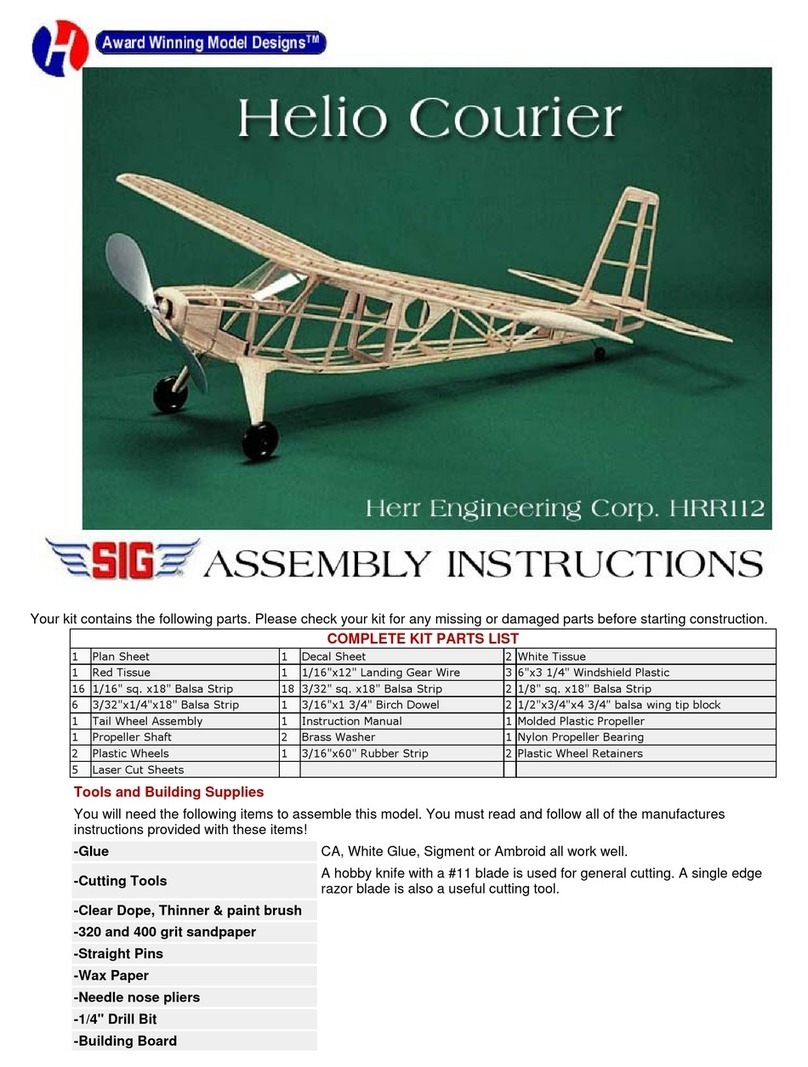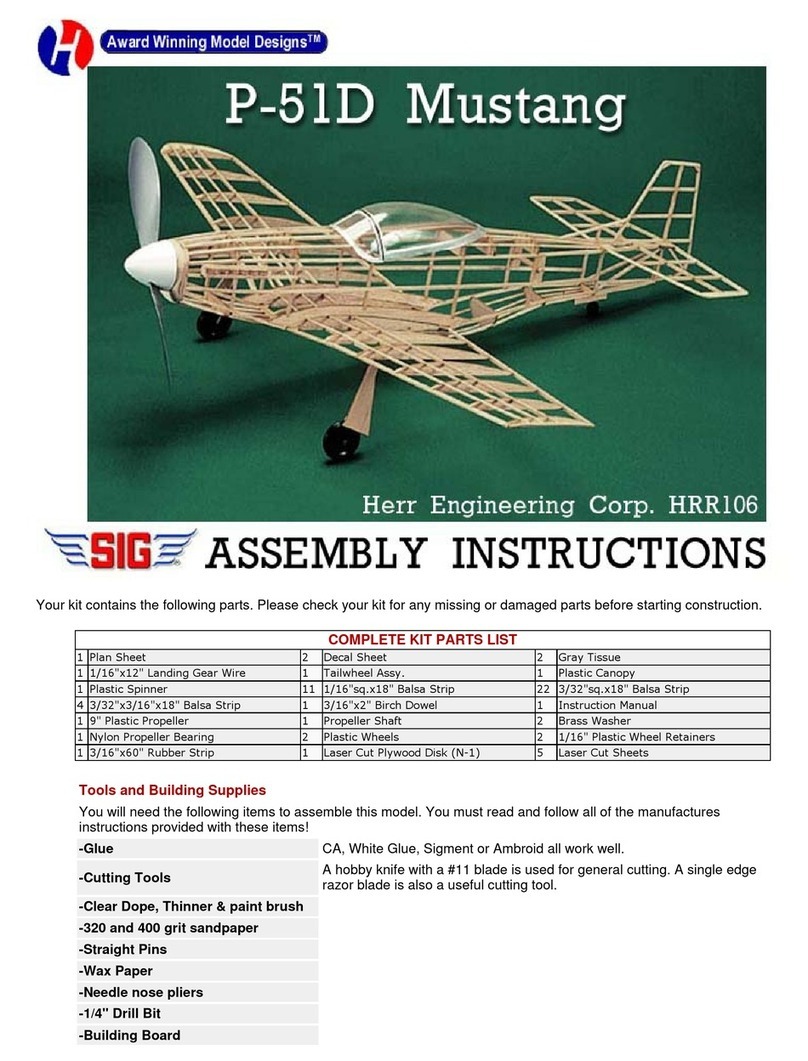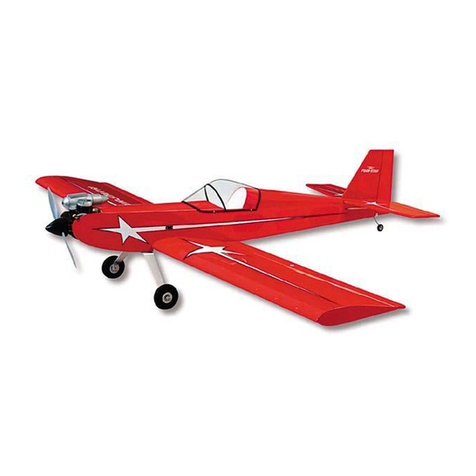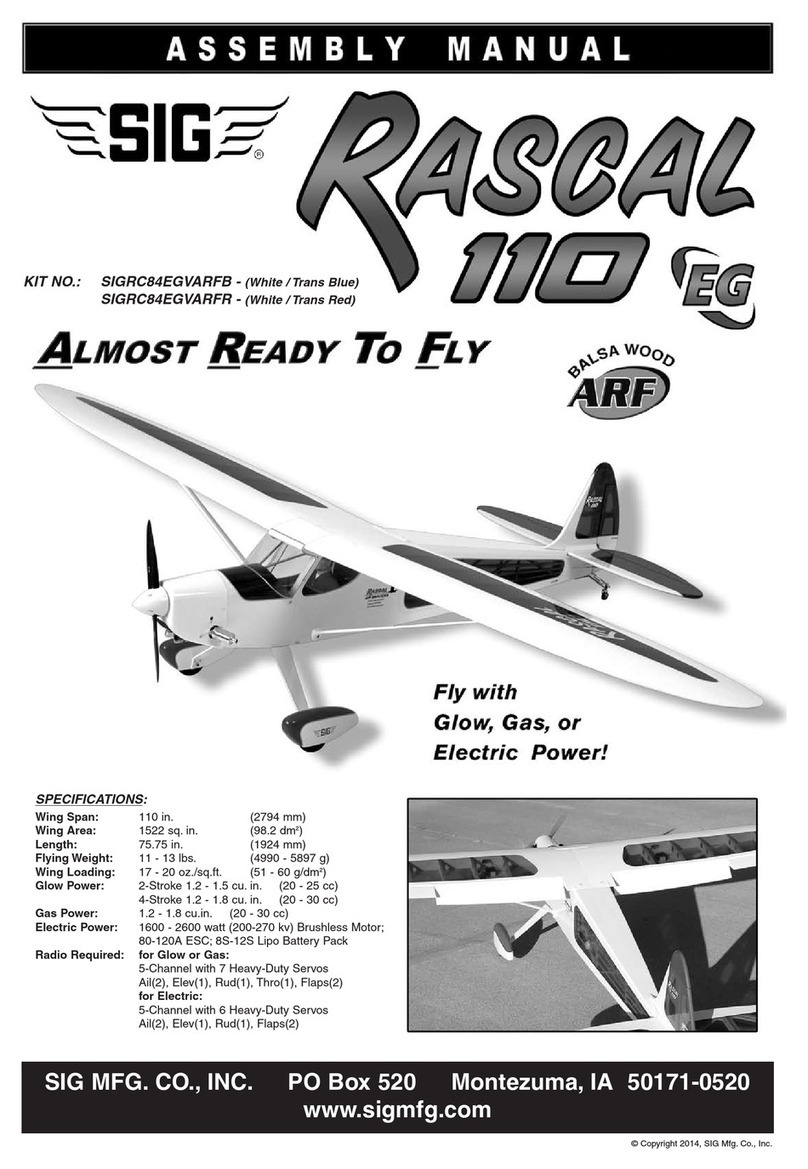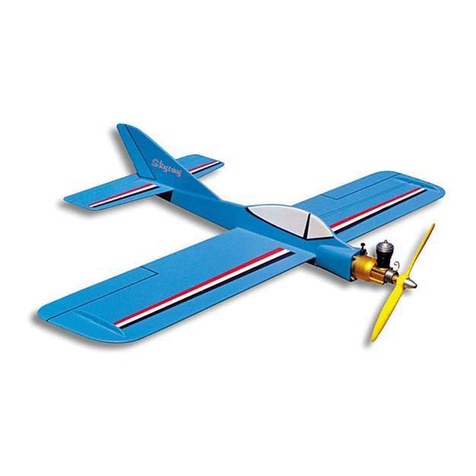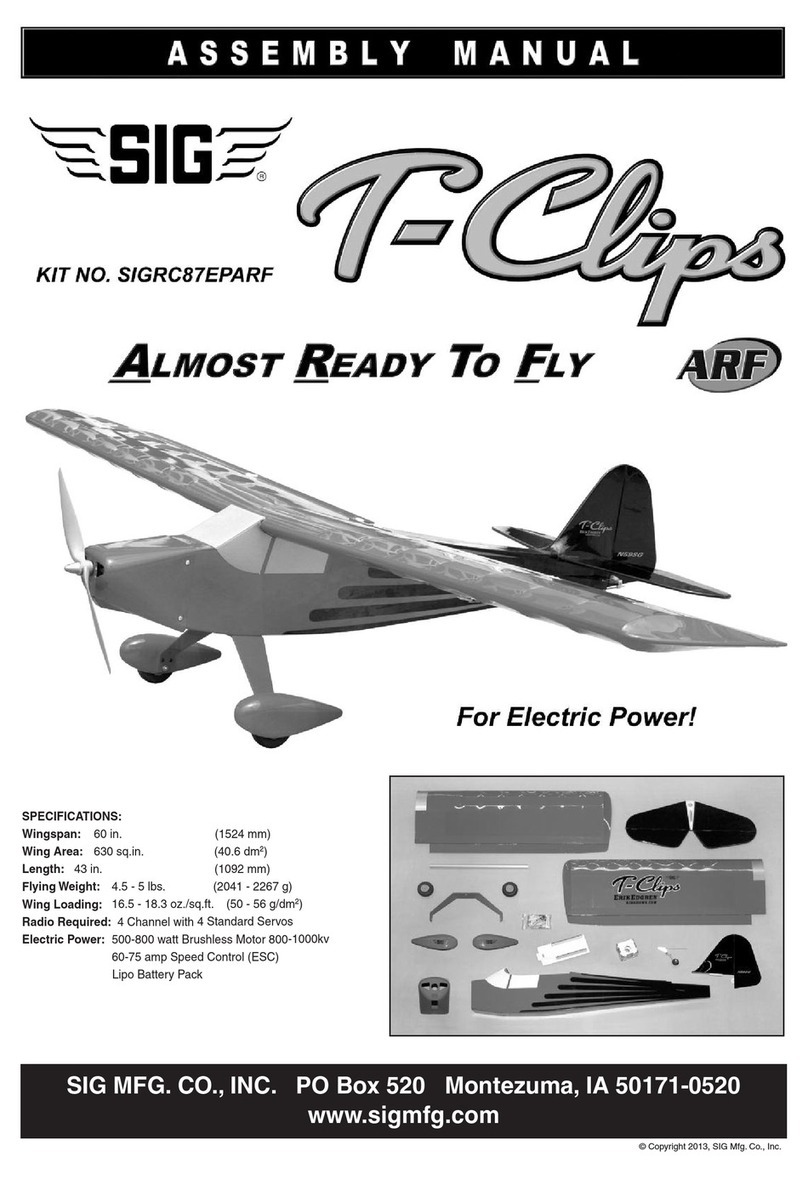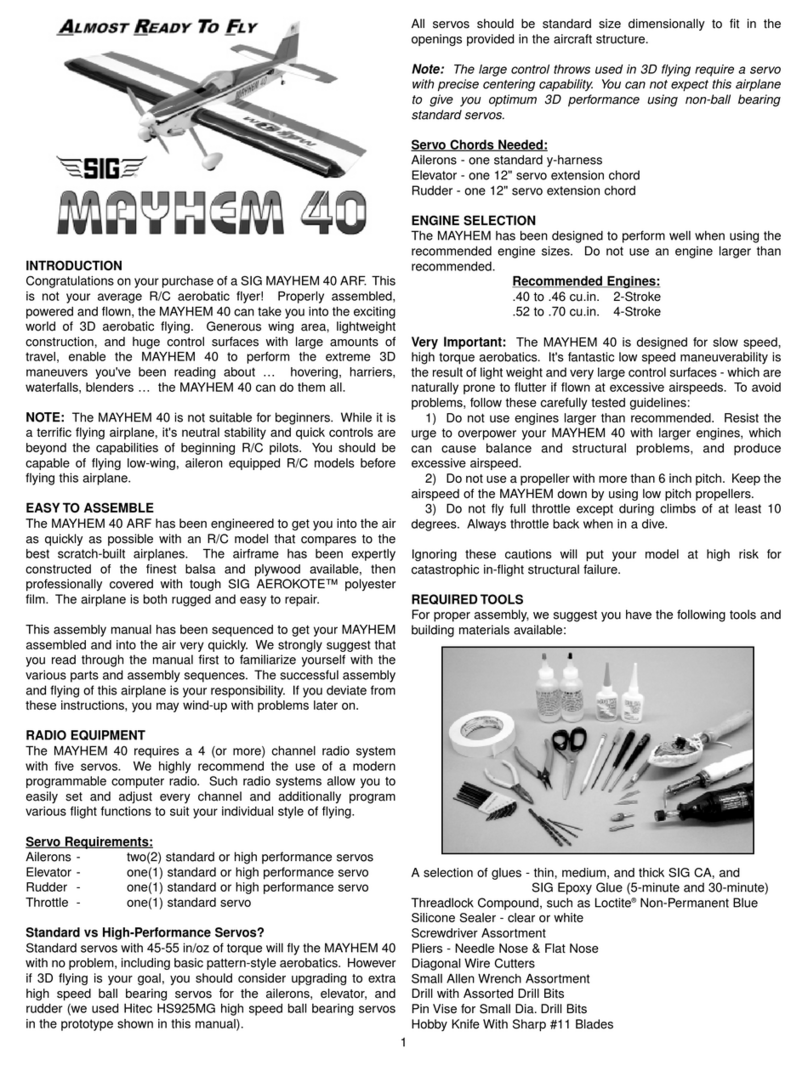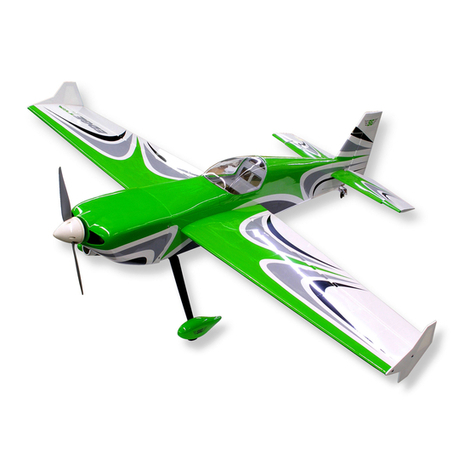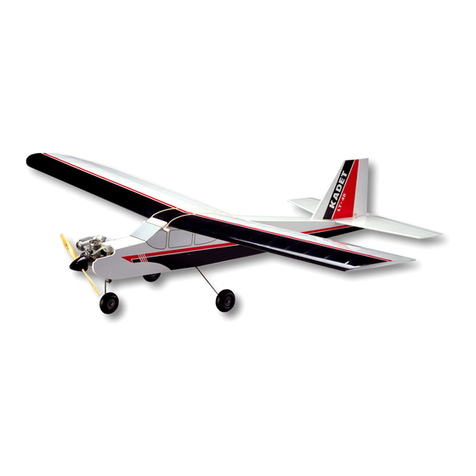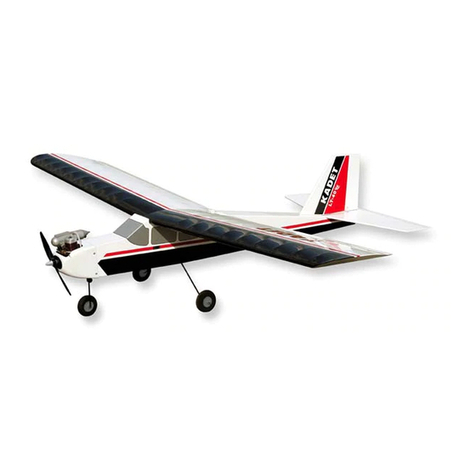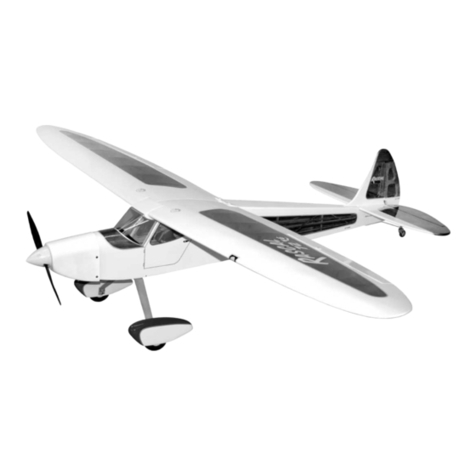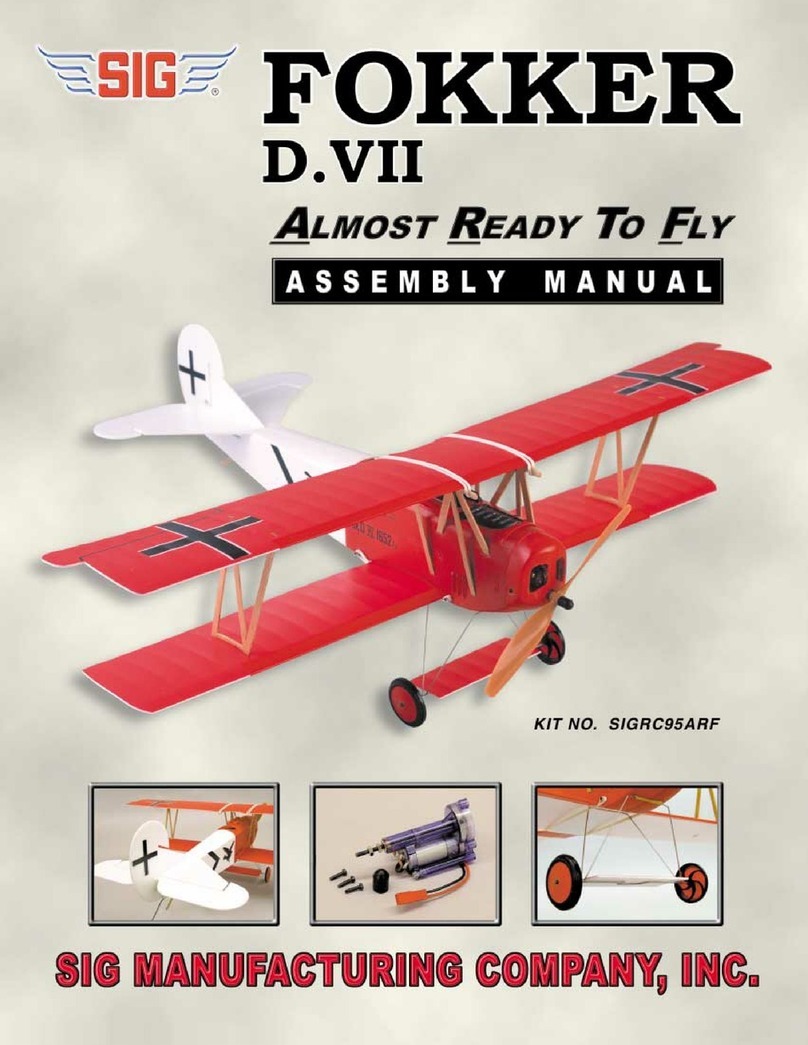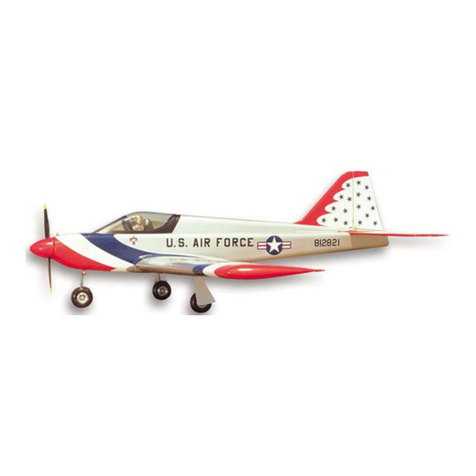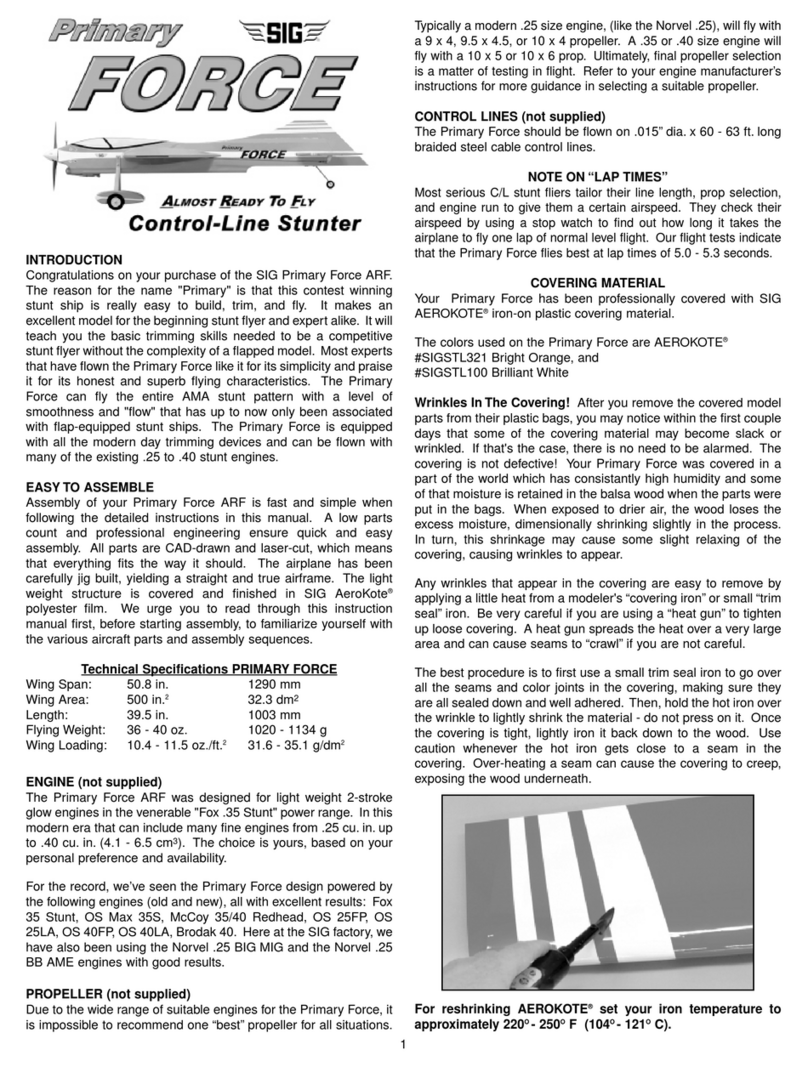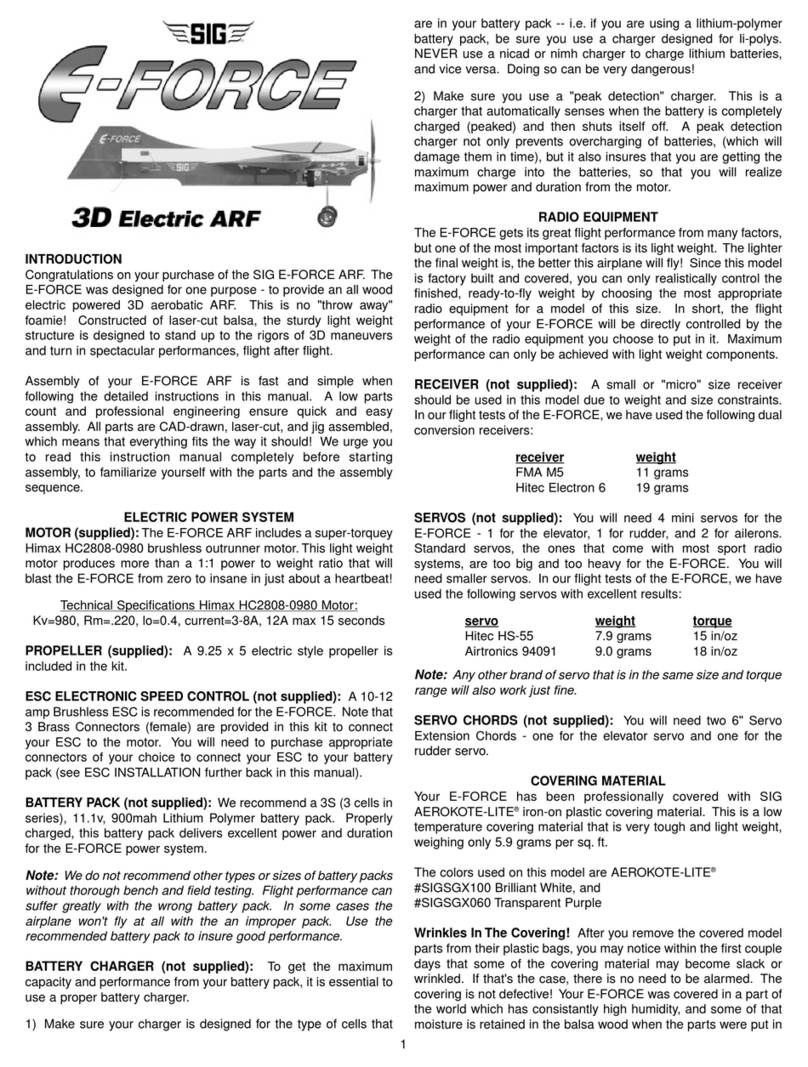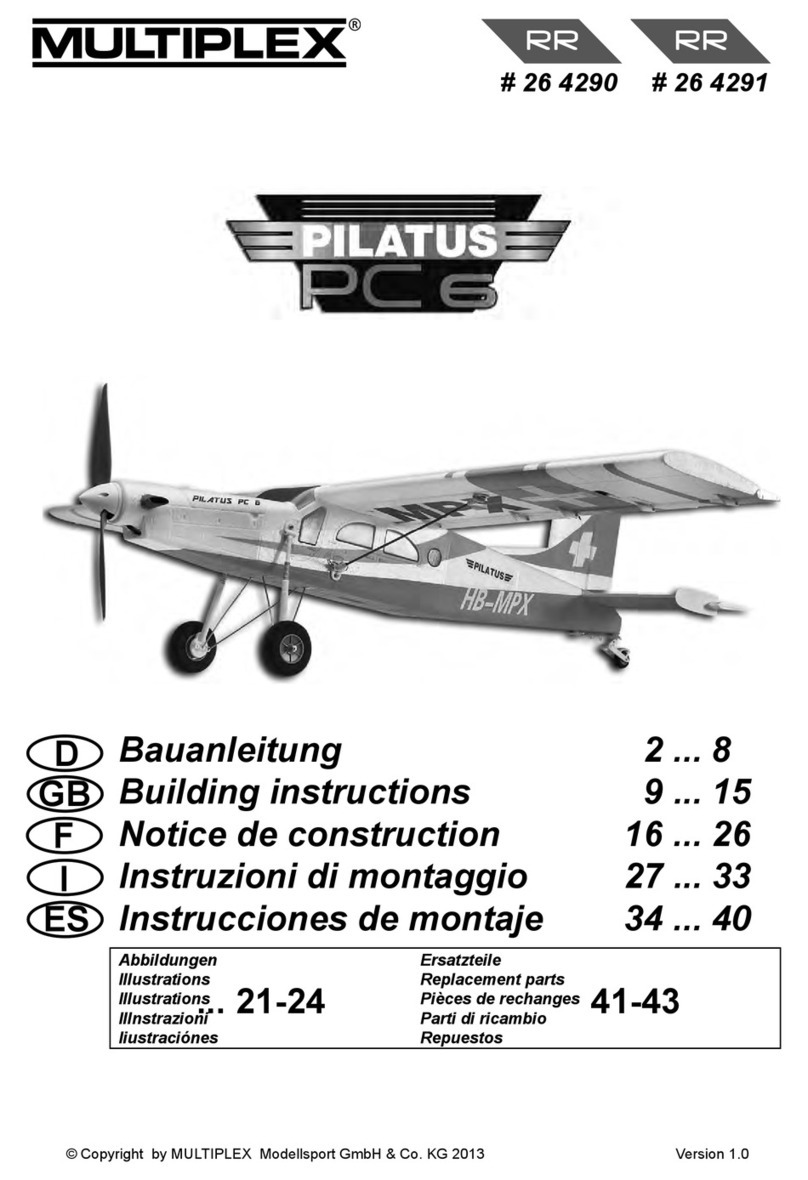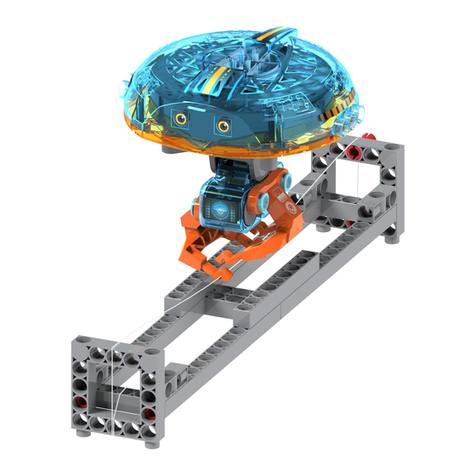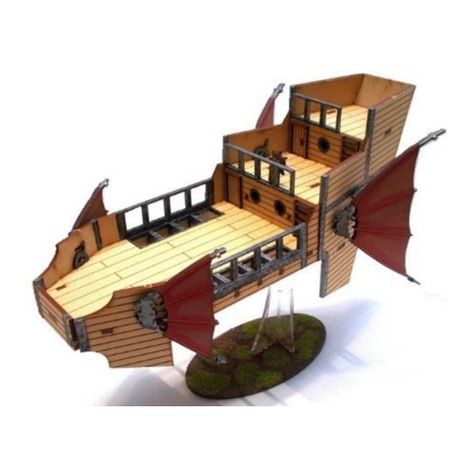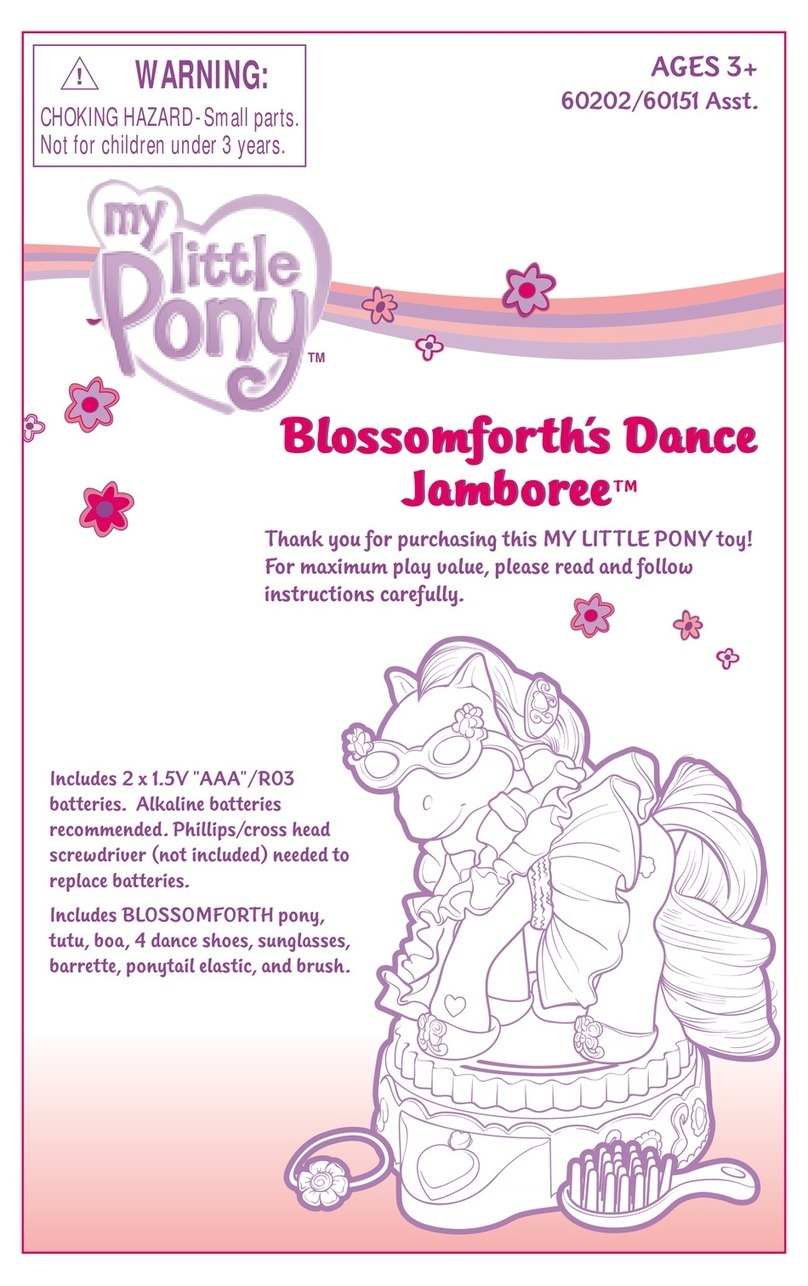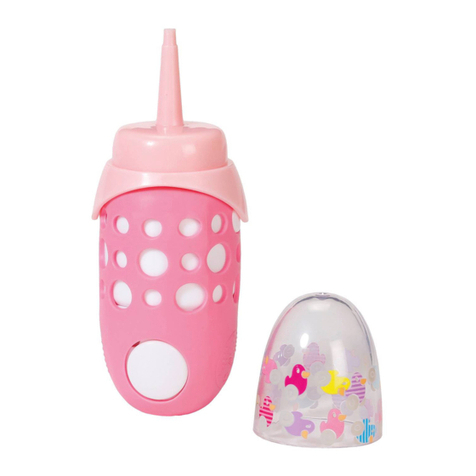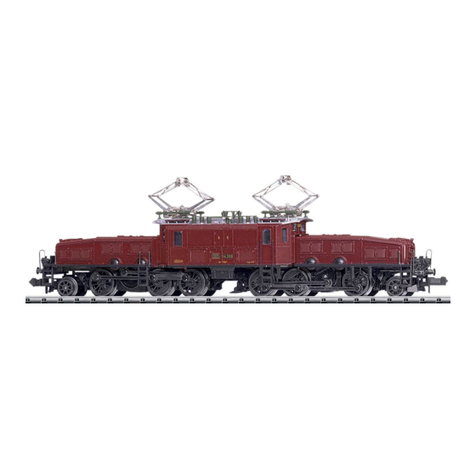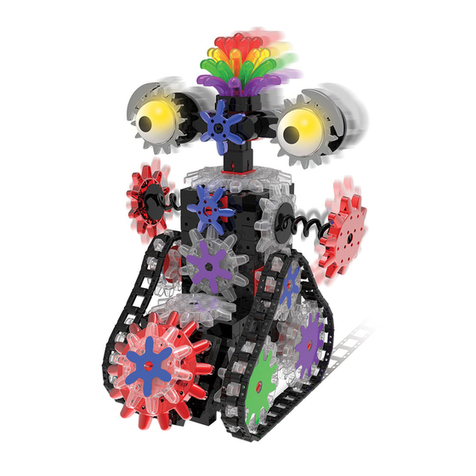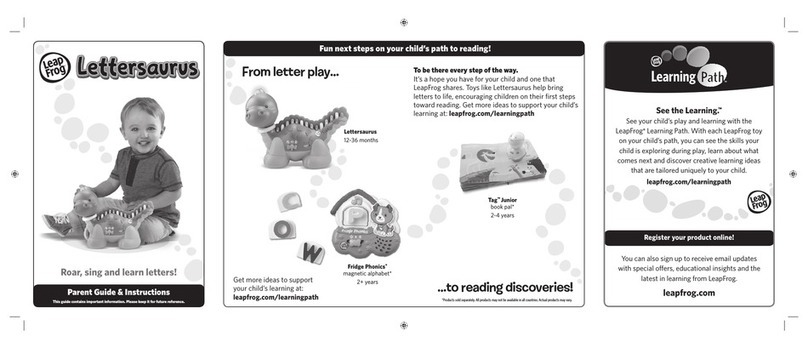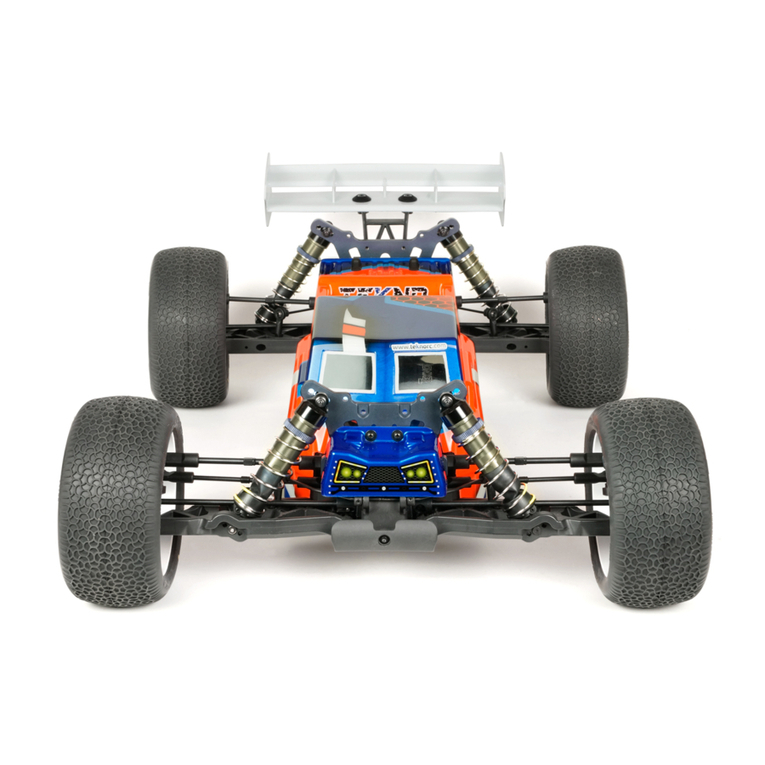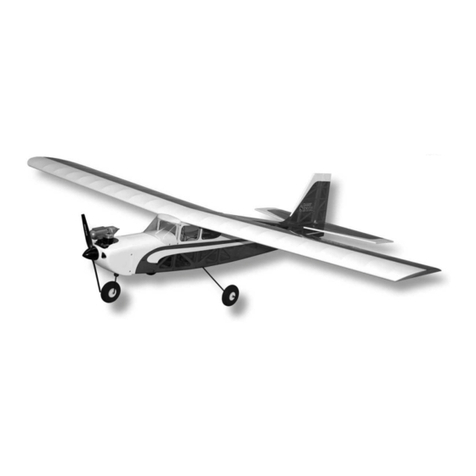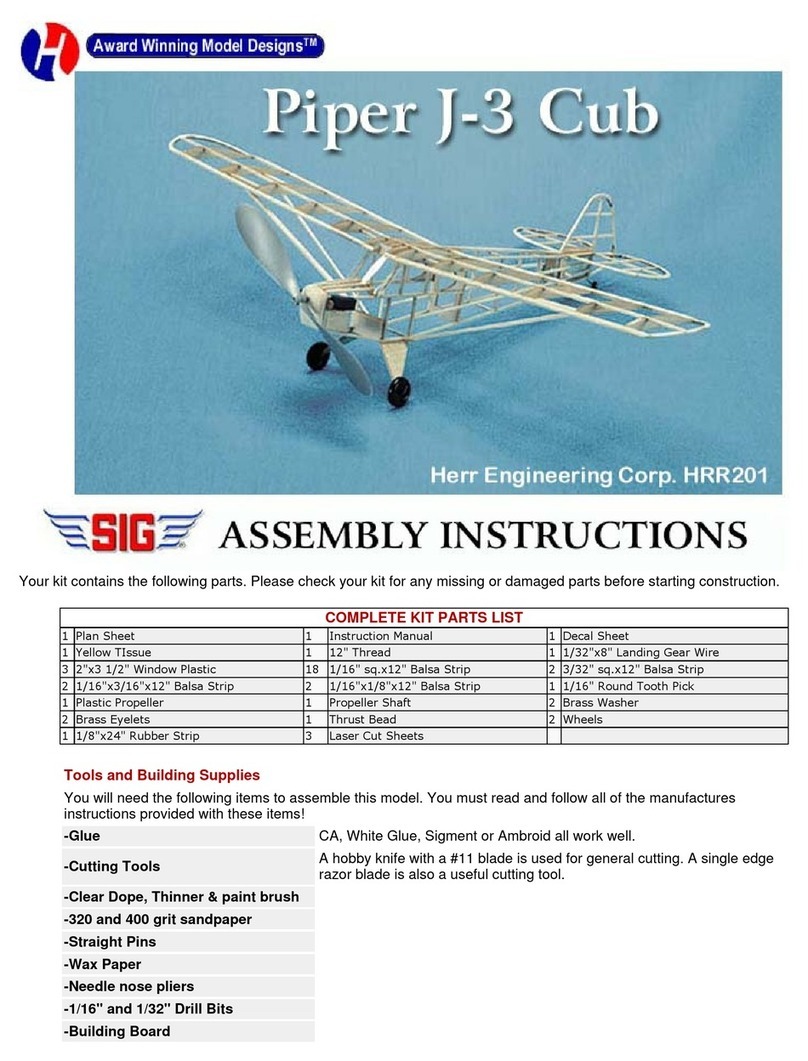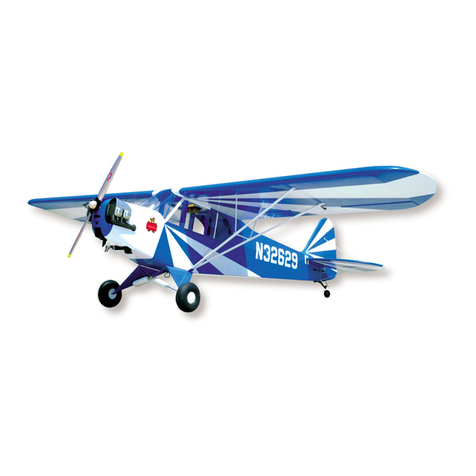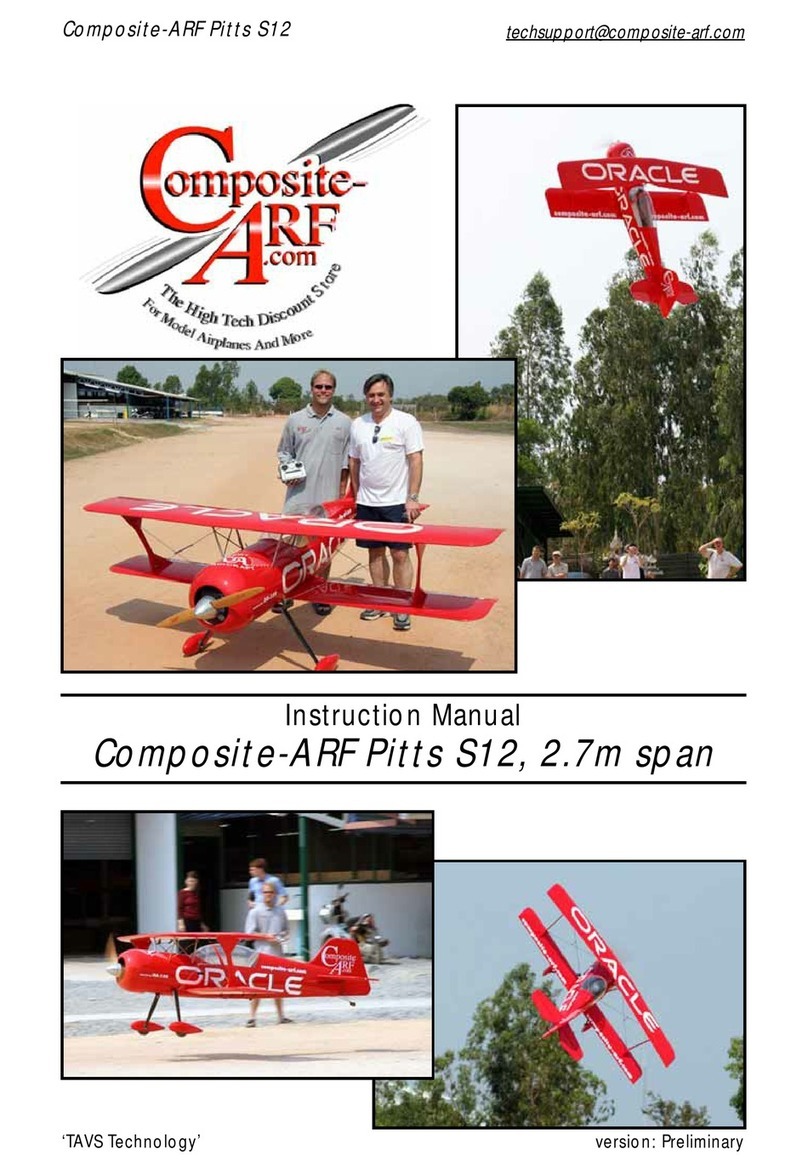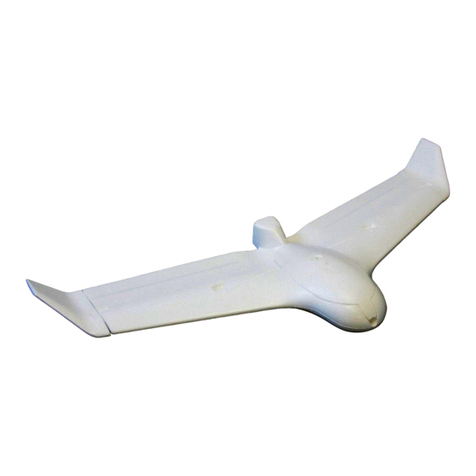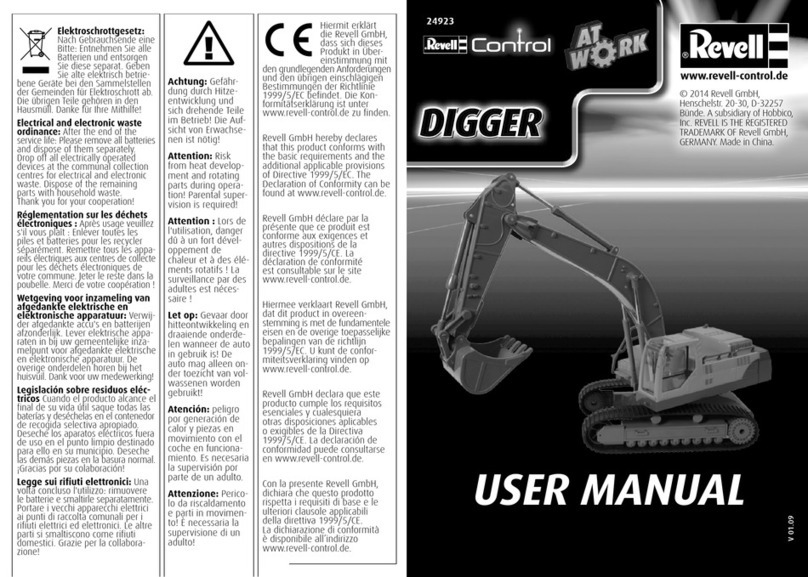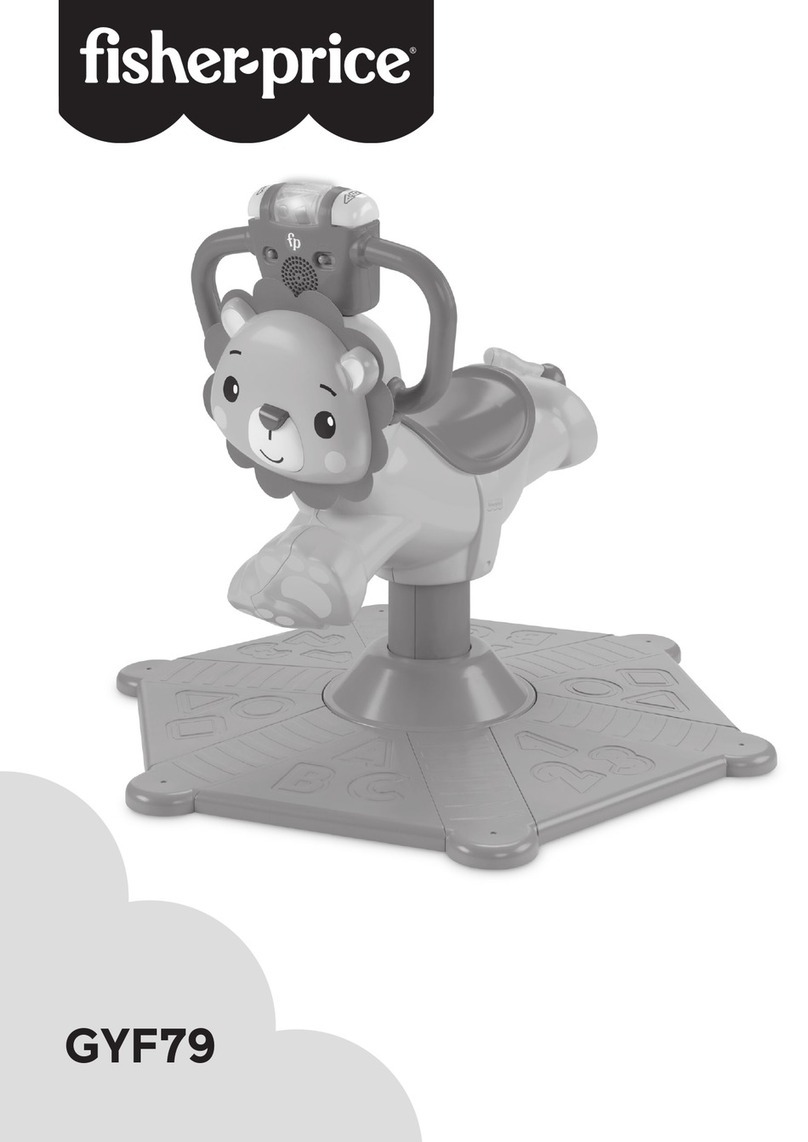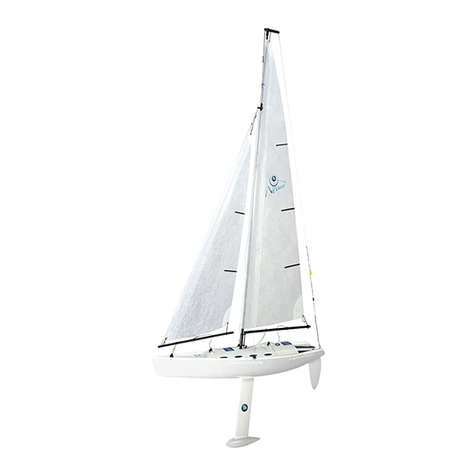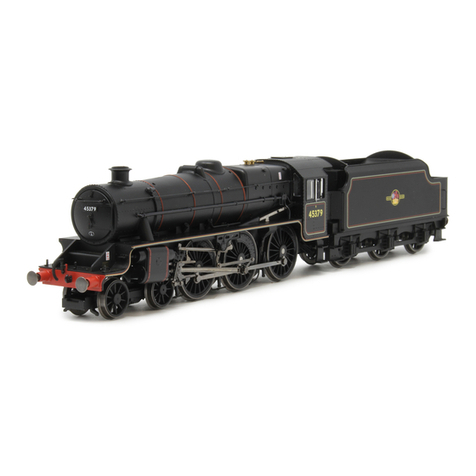16
more sensitive. Remember that the model is always balanced with
the fuel tank empty.
Using a simple balancing fixture, such as two dowels with rubber
tips to protect the finish. It is the most accurate method for
determining and adjusting the correct balance point. However,
since the balance point is located at the main wing spar on this
airplane, you and a friend can lift the assembled model at the wing
tips to check the balance. The airplane should balance perfectly
level. If the nose hangs down, the model is nose heavy. Likewise,
if the model hangs tail down from level, it is tail heavy. If either of
these conditions exist, they should be corrected.
If the model is nose heavy, try shifting the location of the battery
pack a little further back to correct the condition. If the model is
still nose heavy, small stick-on lead weights - available from your
hobby shop - can be used to temporarily correct the problem.
Later, these can be placed inside the fuselage, through a hole that
can then be covered over with matching covering film.
If the model is tail heavy, move the battery pack as far forward as
possible to correct the problem. If the airplane still needs more
weight to balance, then adding weight such as stick-on lead
weights should be used.
FLYING:
If you have carefully followed the assembly instructions in this
manual, test flying your new FOUR-STAR 60 ARF should be a lot
of fun. When it comes to test flying a new model, we always advise
modelers to choose a calm day with little or no wind. These
conditions allow you to better evaluate and more accurately adjust
the trim requirements for your airplane. As we’ve mentioned
before, a good running, reliable engine is a must for the ultimate
success of your airplane. Take the time to solve any engine
problems before you try to fly.
Always make it part of your pre-flight routine to check each control
on the airplane, making sure the surfaces are moving in the correct
directions. Also check each control linkage to be sure they are
secure and that nothing is loose. With all the controls checked,
make a range check with your radio system, making sure
everything is working perfectly.
After starting and warming up the engine, taxi the FOUR-STAR 60
ARF out to the take-off position on the flying field, (holding up
elevator during the taxi will keep the tailwheel firmly to the ground).
For take-off, the airplane should be lined-up with the center of the
field with the nose pointed directly into the wind. Hold a little up
elevator and smoothly advance the throttle - do not slam the
throttle full open all at once. As the FOUR-STAR 60 ARF begins
moving forward, back off of the up elevator input and use the
rudder as needed to correct any engine torque and/or wind
induced deviations from a straight take-off run. At takeoff speed,
use a slight amount of up elevator to lift off, using ailerons to keep
the wings level. Climb to a reasonable altitude before making any
trim changes.
Although, not intended as a trainer, the FOUR-STAR 60 ARF is a
very forgiving design that allows you to fly at relatively low speeds.
With the control movements set at the measurements provided in
this manual, the airplane should exhibit smooth, predictable
control. Try a few loops and rolls. Inverted flight is easy, requiring
a little down elevator for level flight. The FOUR-STAR 60 ARF also
performs nice inside and outside loops, snap rolls, Immelmanns,
stall turns, Cuban eights, and spins. Of course, it is not a pattern
aircraft but with practice, there isn’t much that it won’t do. As with
any aircraft, getting consistently good results is usually just a
matter of practice.
While still at altitude, throttle the engine back to idle. This will give
you a good idea of the glide characteristics. While still at idle,
steadily increase up elevator input to get a feel for the stall
characteristics. Stalls tend to be very gentle with the nose
dropping straight ahead with little tendency to drop a wing. This is
great information to have when setting up your first landings.
Landing the FOUR-STAR 60 ARF is typically a pleasure. We
suggest using a standard landing approach, beginning with a
throttled back downwind leg and base turn to the final approach
into the wind. During final approach, keep just a little power on the
engine until the airplane is over the end of the runway. In
crosswind situations, a little rudder input will likely be needed to
keep the airplane lined up with the runway. The FOUR-STAR 60
is best landed in the three-point position. As long as we’re on the
subject, no landing gear system is bulletproof. Your FOUR-STAR
60 ARF has a great landing gear system that has proven to be
very tough on both grass and asphalt flying fields. However, it can
be ripped off during less than desirable landing approaches, poor
field conditions, failure to flare, and just plain “brain fade”. If this
happens, simply epoxy the landing gear block back in place and
learn to be more careful the next time. After landing, always
remember to hold up elevator when taxiing to keep the tailwheel
firmly to the ground.
We sincerely hope that your FOUR-STAR 60 ARF will provide you
with many, many enjoyable flights. We also hope that this has
been a pleasurable kit for you to assemble and fly. Please operate
your airplane in a safe, responsible manner with constant regard
to other flyers, spectators, and property.


















